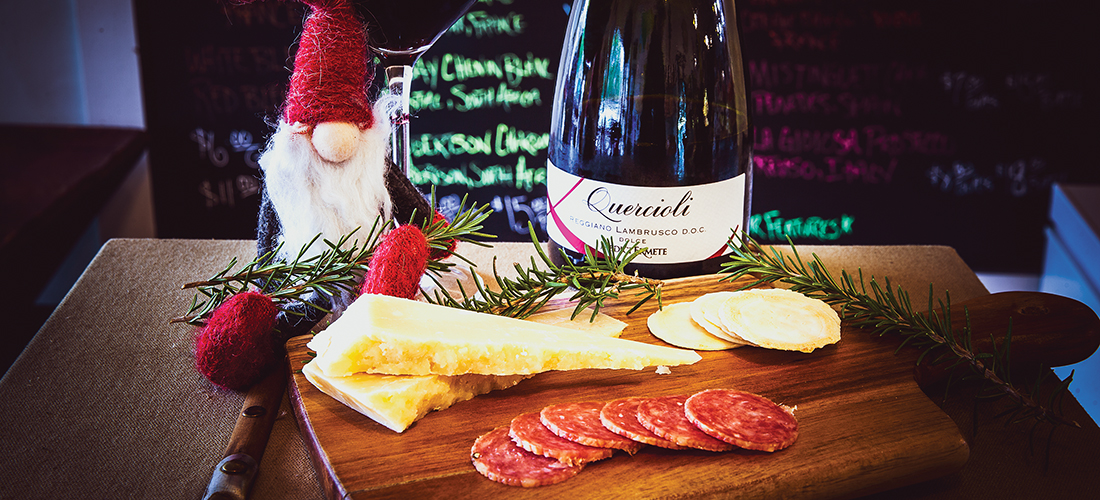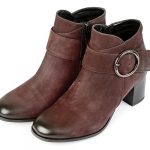
Lambrusco Redux
Drink, eat and be merry
By Angela Sanchez
The wine Lambrusco might send shivers of dislike down the spine, recalling memories of the super-sweet, cheap styles produced in the 1970s and ’80s. Times have changed. These days, Lambrusco producers are making wines that are worthy of sommelier recommendations the country over. Several styles and affordable price ranges make this dark red and slightly effervescent wine the perfect choice for any holiday feast.
In the ’70s and ’80s, Lambrusco was one of the largest U.S. imports of wine in general, and Italian wine in particular. Super-sweet and cheap, it appealed to the American palate at the time — think Cherry Coke and Cheerwine, except with alcohol — and it was widely received as part of the country’s growing interest in wine. I remember my dad drinking it out of a magnum, 1.5 liters, and loving it as much as his Diet Coke. Right wine at the right time. Today our taste is evolving toward drier wines and, lucky for lambrusco, so is its production.
Lambrusco is both the name of the Italian wine and the grapes that go into it. There are 60 different varieties of the grape, but six are key to today’s production style: grasparossa, maestri, marani, montericco, salamino and sorbara. All of the varietals are high-yielding and vigorous, which was good for production in the ’80s, but today’s vintners have begun to control yields to produce higher quality grapes making higher quality wines. They are all slightly different in character but share the same characteristics of bright acidity and rich, berry fruit.
There are three distinct styles to help you decide what to buy to match your taste or your feast. Alcohol content for lambrusco ranges from around 8 percent to about 11.5 percent. The 8 percent will be on the sweeter side, while 11.5 will be drier. On the label, look for the word “secco” for a dry wine, “dolce” for a sweet wine and “amabile” for semi-dry. The majority of these wines will have a beautiful dark, ruby red color and a slight effervescence, but lower than a traditional sparkling wine like Champagne or prosecco.
Lambrusco is perfect for the holidays for several reasons. First, it’s versatile. With styles ranging from dry to sweet it can be used as an appetizer, throughout the meal, and at the end. The wine is produced in the Emilia Romagna region of Italy, known for its amazing cheese, Parmigiano Reggiano, charcuterie, Prosciutto di Parma, and balsamic vinegar from Modena. The rule I go by for perfect pairings is: If it grows together it goes together. For an easy, impressive holiday appetizer, start off with a beautiful cheese and charcuterie platter with cheese and olives, drizzled with balsamic vinegar. You can serve either a dry, semi-dry or sweet lambrusco with the appetizer. Add a hearty salami with fennel to the tray to balance out the flavors.
Second, lambrusco goes with turkey, spiral ham or game dishes. Dry or sweeter styles will work. Juicy — key word — juicy turkey and yummy glazed ham will sing with lambruscco. Try a Cheerwine or cherry cola glaze on the ham paired with a drier style of the wine and you’ll have your guests in awe. For dessert, a sweeter style of lambrusco with a chocolate Black Forest cake is my go-to this season.
Lastly we need a fun, festive wine this season. Lambrusco is a dark, rich red color, cherry and raspberry fruit driven, with a nice hint of bubbles. Sounds super festive to me. Try Medici Dolce for the taste of cherries jubilee in a glass, and Medici Solo for the greatest salami and parmigiana pairing any of your foodie friends have had lately. Whatever you choose, drink, eat and be merry. PS
Angela Sanchez owns Southern Whey, a cheese-centric specialty food store in Southern Pines, with her husband, Chris Abbey. She was in the wine industry for 20 years and lucky enough to travel the world drinking wine and eating cheese.





